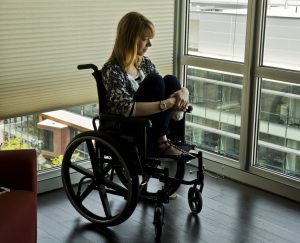Are you thinking of killing yourself?

The question, “Are you thinking of killing yourself?” feels rather unsettling. A few months ago, I became a Youth Mental Health First Aid (YMHFA) instructor with 13 of my colleagues in the state of Delaware. We practiced asking our peers this challenging question and it didn’t get any easier each additional time we said it out loud. In 2017, more than 47,000 people in the U.S. died by suicide, making it one of the leading causes of death. There were more than twice as many suicides that year as there were homicides. The more that we empower the people in our community to get trained in YMHFA and learn how to speak to someone struggling with suicidal thoughts, the more likely the number of suicides will start to decrease.
Categories: Health and Wellness, Uncategorized
Tags: health care, mental health, suicide.
Prevent the abuse

Like many these past weeks, I’ve been following the tragic story of the woman with significant intellectual disabilities receiving services at Hacienda HealthCare in Phoenix, Ariz. According to news reports, she gave birth to a child after being sexually assaulted, allegedly by a 36-year old licensed practical nurse. The reports also have tracked the resignation and suspension of two doctors at the facility, and the removal of the now former CEO, who reportedly had sexual harassment allegations leveled against him by various staff members beginning in 2006. Like most people, the story disgusts me, but unlike many, it didn’t shock me.
Disabled people are seven times more likely to be victims of sexual assault than their nondisabled counterparts, according to Department of Justice crime statistics. These crimes are most often committed by people individuals with disabilities know, during the daytime, and in places where the victims, their loved ones or others assume they’d be safe, as reported in an NPR report by Joe Shapiro.
Categories: civil rights, long-term care
The media’s job

You probably didn’t see them. Too few people did. News stories about thousands of people with disabilities facing life-or-death situations.
One reported that more than 10,000 people died waiting to hear the result of their Social Security Disability Insurance appeal in 2017. The other revealed that Delawareans with disabilities who rely on Supplemental Security Income can’t afford the rent on an average one-bedroom apartment.
Unfortunately, the stories appeared during the holiday rush. Bad timing. But you also likely didn’t see them because too few press outlets chose to give the topics the time of day. Then as now, the press was more interested in devoting space daily to Democrats taking control of the House, the government shutdown and the volatile stock market – important stories, surely, stories the media considers mainstream. Yet they also gave space, and plenty of it, to stories involving Meghan Markle and Lady Gaga, the weather, and, dare I say it and lose local readers of this post, the Eagles’ chances of making the playoffs.
Categories:accessibility, civil rights, diversity, inclusion, people with disabilities.
Poised to take advantage

With the midterm elections behind us, disability advocates face an opportunity to make significant legislative gains.
The conventional wisdom holds that gridlock will dominate the 116th U.S. Congress, which begins in January 2019. With a GOP majority in the Senate and a Democrat-controlled House of Representatives, both parties are poised to block each other’s most polarizing bills. But because there will likely be little movement on contentious agenda items, space will open up for other issues to come to the fore. The disability community is uniquely poised to take advantage.
Many disability-related policies were not only front and center in the midterm elections – several unified Democratic and Republican voters.
Categories: accessibility, Americans with Disabilities Act, civil rights, Health and Wellness, politics, self-advocacy
Tags: ACA, health care, medicaid, medicare.
A fighting chance

Last month, federal immigration agents separated a 10-year-old girl with Down syndrome from her mother at the border. Nine months before that, agents did the same to a 16-year-old boy with autism, taking him from his caregiver grandmother.
Unimaginably unconscionable, their separations and those of some 2,300 other children at the border from their parents and other caregivers came in the wake of president Trump’s zero tolerance policy against immigrants allegedly entering the country illegally. Though the president eventually signed an executive order June 20 calling for children to instead be detained with their families through the duration of immigration proceedings, the damage is done.

